Victorian properties remain extremely popular but are not without their issues. From our own experience we can say that while they are a real gem, any buyer should be prepared for certain problems.
Therefore, the first point to appreciate for this article, ‘Buying a Victorian house – problems you may encounter’, is that you really should invest in a structural survey.
While Victorian homes remain popular with UK house buyers because they offer a period property packed with impressive features, they are also usually well-constructed with a good layout, but there can be serious and expensive issues to resolve.
Knowing what these are as early as possible will help determine whether your stunning Victorian gem is really worth the time and expense you will be saddled with.
We currently own a rural Victorian house, so we are well versed in some of the common issues!
How old is a Victorian house?
While the obvious answer to the question, “how old is a Victorian house?” is that it’s a property that was built during the reign of Queen Victoria, it’s not quite that simple.
Queen Victoria ruled from 1837 to 1901 and oversaw the Industrial Revolution which led to a housing boom, so millions of houses were built over this period.
However, the style of architecture also stretches into the Edwardian period as well, so some Victorian homes could be anything built up to 1910.
In the early days of Queen Victoria’s reign, architects were influenced by Regency architecture; later they took on board the Gothic style and later the more popular and distinctive Victorian property style began to take shape.
Our Victorian property was built in the 1850s as a two up, two down farmhouse, though it’s been extended several times throughout its life.
Don’t assume you’ll be getting original features!
While many buyers love these homes for their original features, many of them were removed in the 60s and 70s as home-owners enthusiastically renovated their homes. Consequently, there may not be that many traditional features available in a Victorian house being sold today.
For example, one feature buyers love are the ceiling roses, but you’ll need to check it is the original, though these properties tend to have high ceilings so a poorly-made version will be noticeable.
However, you should also check the interior ceilings since the original plaster is probably one period feature that a modern house buyer could do without.
Buying A Property? FREE Step-By-Step Platform
Victorian architectural features
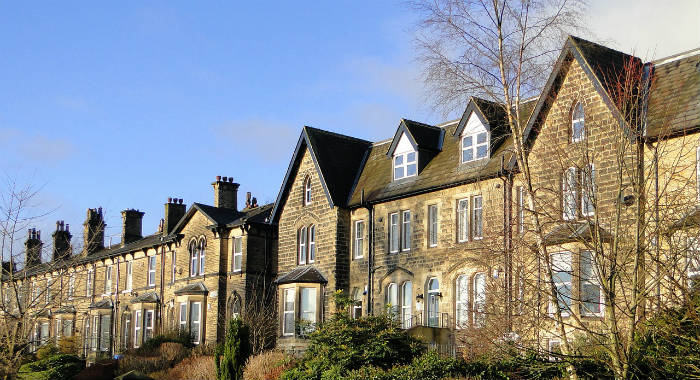
Essentially, Victorian homes, which were usually built as terraces to accommodate a growing population have distinctive architectural features such as decorative wooden panels, or barge boards, on the gable ends.
There’s also extensive use of patterned bricks, with most houses having slate roofs, along with bay and sash windows.
Inside, these houses tend to have terracotta floor tiles on the ground floor and in the porch areas.
Some Victorian properties still retain the original stained-glass features along with having a fireplace in most rooms – which means that Victorian homes also usually have a lot of chimney pots on the roof.
Our current home was built in the 1850s, so in the middle of the Victorian era. We love the period charm of our house, with its wooden beams and fireplaces. The room proportions are also very generous, which is more than we had in previous homes that were built a century later.
We have two fireplaces ensuring all the original rooms had a fireplace and that also means we have two chimney stacks on the roof!
Are Victorian houses well-built?
Put quite simply, if you’re wondering whether Victorian houses are well-built, then the answer is that they are still standing and are sturdy, well-constructed and well-designed properties.
There is strong demand for them because of this and for a property that has been well maintained, it will be worth the money – as the surveyor’s report will testify.
It’s because of their design and the quality materials used that have made them a popular feature of many cities in the UK and the demand means that the resale value for a Victorian house is strong.
Our Victorian house is very well-built, and you can feel it as soon as you walk in. But one thing you shouldn’t expect is straight walls. Not one room in our house has walls with the same lengths.
It’s quite fascinating really. And while it doesn’t cause any issues, it’s good to know when you redecorate. For example, when you get a carpet company out to measure your room, make sure you make them aware about the difference in wall lengths.
We had it only recently, where we had to ask the carpet firm to re-measure because their result was quite a bit smaller than what we calculated. It turns out they only measured the smaller walls, rather than all four.
How much does a Victorian house cost?
Having considered the durability of a Victorian property, you may be wondering how much does a Victorian house cost?
It’s important to appreciate that they tend to sell quickly, which means there’s a premium for them and these are properties that have been built to last.
Prices will vary between the regions and between cities and even neighbourhoods, but they tend to be in well-established areas close to city centres with lots of amenities close to hand, which makes them a popular choice with families.
If you really have set your heart on a Victorian property, then you’ll be paying close to the asking price, even if there’s a long list of pricey repairs to carry out.
Living in a Victorian terraced house
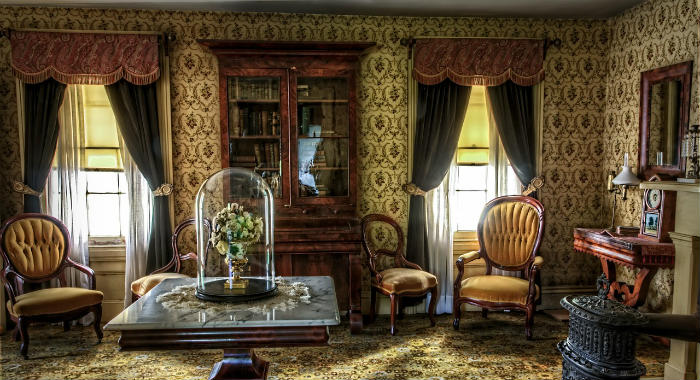
There’s a lot to recommend living in a Victorian terraced house, which despite the age of the design and the build is surprisingly suitable for modern family living.
That’s because they were designed to be utilitarian, and they make for great renovation projects.
In addition, it is possible to add extensions to the rear to create more space in the property. Our Victorian house has a modern extension that is almost as big as the original house.
But you wouldn’t know it, because the rooms of the original part are so spacious, that they fit right in with the extension.
It’s also possible to either renovate the property to enjoy the big Victorian features or create a modern lifestyle within an old building to get the best of both worlds.
While many of them were built without car parking spaces, this is not a downside to buying them, but it is a consideration.
Pros and cons of buying a Victorian house
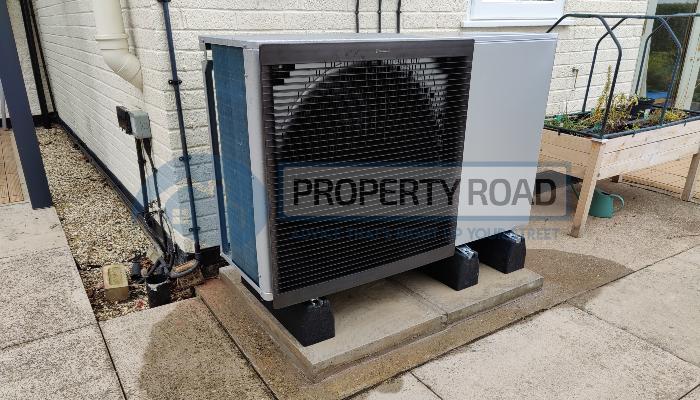
When it comes to the pros and cons of buying a Victorian house, there’s a lot to recommend this type of property over a new-build home.
A lot of this will be down to personal choice and taste, but among the pros is that Victorian properties were built to last.
However, the foundations can be shallow, and they do have unique features including tiles and fireplaces that may be expensive to repair or replace.
Despite this, anyone owning a Victorian property will have little trouble when it comes to selling it when they want to move.
Along with offering more floor space than most new builds, these properties can be more expensive to upkeep and maintain in good condition.
Among the problems may be the need to re-plaster the walls or replace the roof and some may have structural problems.
Another major downside is Victorian homes can be draughty, particularly those with sash windows, and rooms with high ceilings will mean high heating bills.
Because the Victorian part of our house has solid walls, rather than cavity walls like modern buildings, our house loses a lot of heat during winter.
In fact, solid walls account for 35% of heat loss in Victorian buildings (Li & Densley Tingley, 2021).
In the first year, we were freezing during the night in our bedroom, which is in the old part of the house. We had an oil boiler, and the heating came on twice a day, like most people have it set up. But because the old part of the house lost the heat so quickly, we would have to put it on much more often to keep it warm.
However, this would have cost a fortune. So the first year we put a small electric radiator in the bedroom to keep it at least warm enough, so we couldn’t see our breath. And during the day we just added layers to keep warm between the times the radiators were on.
Then we installed a heat pump, which is able to keep our Victorian house warm all winter, without costing us the earth.
Furthermore, it’s also possible to employ solid wall insulation techniques. As presented by a 2014 solid wall insulation study by Daniel Price, the method garnered positive responses from Scottish respondents.
Although the cost is a huge deterrent, several subsidy options exist that can relieve the homeowner’s financial burden. Rosenow et al. (2014) even tested three specific funding options that can benefit both the borrower and the Exchequer.
So while Victorian buildings can have some drawbacks, you can find solutions for them.
Are Victorian houses money pits?
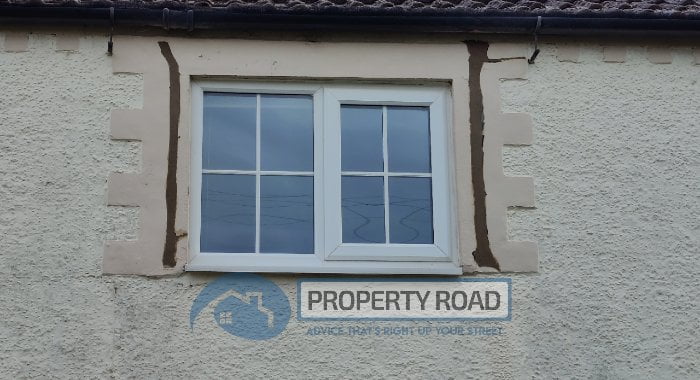
One of the problems highlighted is that these properties tend to be very old and need to be maintained properly, so if you’re worried that the Victorian house is going to be a money pit, you need to tread carefully.
No one wants to buy a property that needs lots of money spent on it, particularly if you haven’t been able to renegotiate the property’s price with the vendor.
There’s no doubt that some repairs can be expensive, for example, replacing the roof, but this will be money well spent depending on how long you are looking to remain in the property.
When it comes to the roofs and ceilings, builders often used Welsh slate, so your survey should ensure that the slates are still in good condition because replacing them can be expensive.
Along with subsidence, since many of these properties were not built with the best foundations, there may also be cracks, and you’ll need to pay special attention to any cracks you can fit your fingers into.
Sagging windowsills, as well as windows and doors not closing properly, are also potential problems with a Victorian property.
This is also an opportunity to look at the neighbouring properties to see whether the outside brickwork shows signs of cracks and have a look at the end terrace to see if there are problems there.
While our Victorian house didn’t have problems with subsidence, we have found a lot of damp patches since we moved in. Because the walls are solid rather than cavity, any water that enters the wall will get straight into the house.
It meant that we had to do a lot of repairs in the walls, gutters and the roof to keep the water out. Unfortunately, with old buildings, this is not unusual. But we wouldn’t swap our Victorian house for a new build.
Victorian properties usually have a nice layout
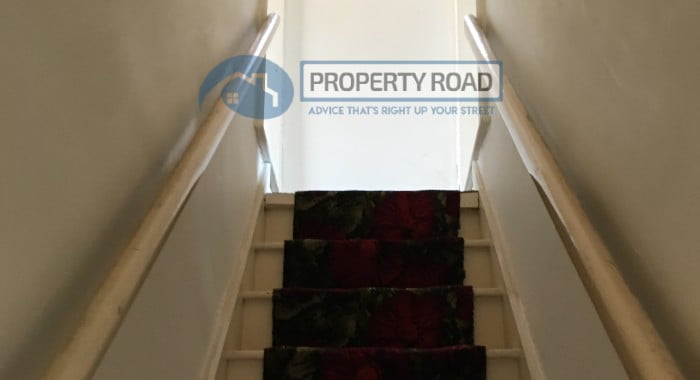
As mentioned, a Victorian property usually has a nice layout with a kitchen at the rear and two reception rooms at the front.
These properties are easy to adapt for modern living with many buyers choosing to knock through these two rooms into one, which will remove the corridor and help extend the kitchen.
If you are looking at a Victorian property where this work has already been undertaken, then you need to ensure that it’s been carried out to a high standard and there are relevant certificates in place.
That’s because the original design would prevent the spread of fire, whereas open-plan living can create a fire hazard, particularly having open stairs.
The other issue with the layout is to see whether the loft has been converted, and you should be able to stand upright in the middle of the room, though using the full space tends to be limited by the roof’s eaves.
Our Victorian home, for example, has a very narrow roof space to the point where you can pretty much only crawl around in the loft. That’s made it more challenging when installing extra loft insulation and means we can’t store much up there.
So, converting our loft has never been an option, but several extensions (including a double-storey rear extension) have been added to pretty much double the original floorspace of the property.
Victorian homes in the UK

While Victorian homes in the UK tend to be a popular choice, potential buyers really should take a close look at the property’s plumbing, heating and electrics since you may need to upgrade these.
This also means looking behind plugs and light switches to ensure they can be replaced easily and to check they are not hiding old wiring.
The estate agent should know when the wiring was updated last and for any relevant certification to show that it was carried out to the required standards.
A property inspection should also take into account any potential damp issues since the original slate damp proofing system that would have been installed may have cracked or even perished over the decades. Even the best properties could have damp issues because of this.
However, it’s not a major issue having the damp proofing repaired, and you should also check the wall insulation and whether the windows need replacing with either double glazing or new sash style replacements.
Knowing that Victorian properties often have damp issues, we had a damp survey carried out by an independent surveyor before we bought our current home. Unlike a homebuyers survey, a damp survey focuses on potential damp issues.
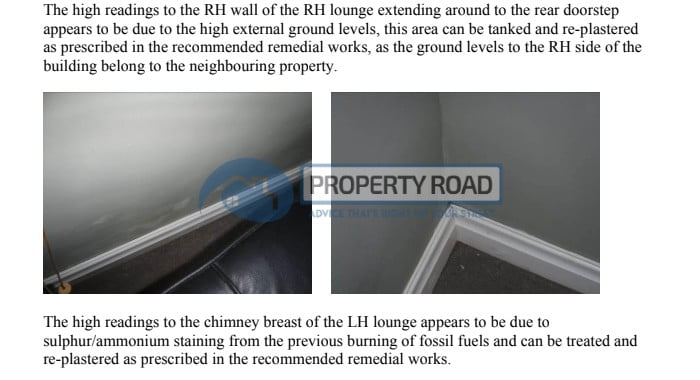
More crucially, the surveyor will tell you exactly what you need to do to remedy any problems and what the costs involve should be like. This gave us the confidence to buy the house, knowing what we would need to do to get any damp issues under control.
Generally, we would recommend getting a full homebuyers survey done, if you are thinking about buying a Victorian house. With a full survey, you’ll get a good idea of the defects that may be present, along with old wiring or damp issues.
If you are concerned about any damp that has been brought up, from our experience it’s best to then get a damp survey carried out.
Unusual features in the Victorian property
The survey will offer advice about how you can repair any damage and also how you can go about maintaining any unusual features in the Victorian property and the surveyor’s report will also include cost estimates for this work.
Remember: it’s the survey that will enable a potential buyer to negotiate a fair price so that they can enjoy an impressive Victorian property for years to come and answer the question of how they can deal with any problems when buying a Victorian house.





